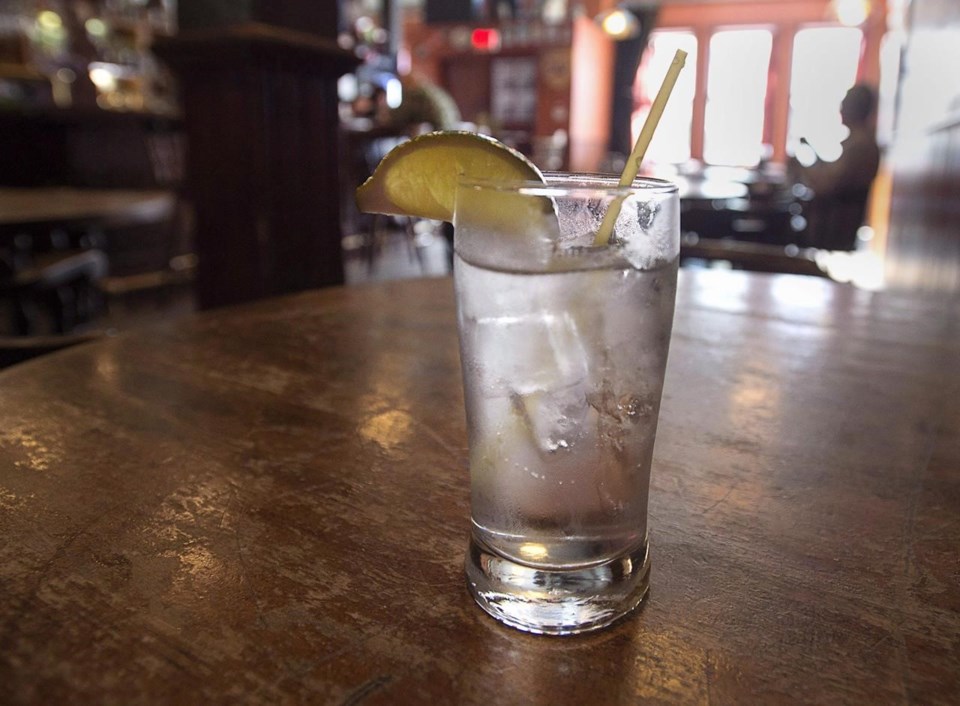YELLOWKNIFE — The Northwest Territories government has released its first strategy aimed at reducing alcohol-related harms.
It details 15 actions the territory plans to take by the end of March 2028 to improve communications, policy, prevention, public safety and treatment. That includes adjusting prices to incentivize the purchase of lower-alcohol products, introducing substance use education at a younger age and encouraging the use of interlock devices to prevent drunk driving.
"We wanted to work toward any positive change," Bree Denning, a senior adviser with the Department of Health and Social Services, said in a briefing Wednesday.
"That means that abstinence can absolutely be a goal if people are struggling with alcohol use, but really we just want to see positive changes in terms of reducing alcohol-related harms, wherever someone might be."
Denning said the plan was developed through consultation with leaders, service providers, youth and people with first-hand experience. She said the government is finalizing a way to track progress.
Among the strategy's goals is the creation of an interdepartmental body to collaborate on alcohol-related messaging. That includes promoting Canada's new low-risk drinking guidelines, deterring driving while under the influence, and increasing awareness about available services and how to access them.
"What we found was there was a lot to communicate and we were doing it in a somewhat siloed manner," Denning said.
To reduce bootlegging, the strategy suggests introducing retail outlets in communities where alcohol is not prohibited. It says communities should also have greater control over where liquor stores are allowed, the type of products they can offer and when they can operate. It also suggests communities have the option to close them through a plebiscite.
Other goals include implementing a minimum price per standard drink, increasing supports for parents, expanding recreational programming and training for service providers.
"I'm really excited about the prevention activities because that really came out of a lot of youth discussions," Denning said. "They are, frankly, smarter than I feel like I was at that age and they want to be engaged and I think we can really change the tides of things if we do this well."
A 2019 Canadian Alcohol Evaluation report gave the territory a failing grade of 33 per cent when it came to implementing evidence-based alcohol policies.
A 2022 report from the Auditor General of Canada also found the territory had not adequately provided residents with accessible, co-ordinated and safe addictions prevention and recovery services. It identified gaps in aftercare support, cultural safety, evaluation and monitoring.
The Northwest Territories has some of the highest per-capita alcohol-related costs, hospitalizations related to substance use and rates of addiction and substance use in Canada.
The Canadian Centre on Substance Use and Addiction says substance use cost the territory more than $181 million in 2017, or $4,047 per person, including costs related to health care, justice and lost productivity. Of that, $88 million was attributed to alcohol.
The latest annual report from the territory's Department of Health and Social Services says that since 2004, the territory's rate of hospitalization due to harm caused by substance use has been trending upwards, and was more than three times the national average in 2021-22. It said more than 80 per cent of those cases involved alcohol compared to around half nationally.
The report also states in the previous five years, alcohol and other drugs accounted for more than 50 per cent of all mental health hospitalizations in the territory. It also said 27.7 per cent of the N.W.T.'s population over the age of 12 were classified as heavy drinkers in 2021-22 compared to a national average of 17.5 per cent.
This report by The Canadian Press was first published March 29, 2023.
This story was produced with the financial assistance of the Meta and Canadian Press News Fellowship.
Emily Blake, The Canadian Press




